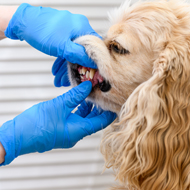Causes of poor performance in horses
Following a workshop held by the Saddle Research Trust (SRT) in 2012, a review has been published about the influences a horse, saddle and rider have on each other.
The workshop involved active discussion among international professionals about what is known, as well as the challenges faced, with the horse-rider-saddle interface.
In hope of improving understanding, Sue Dyson, head of clinical orthopaedics at the Animal Health Trust's (AHT) Centre for Equine Studies, and PhD student Line Greve have evaluated the evidence that is already available and have looked at future steps in order to further understanding.
Dyson and Greve state that common causes of poor performance in horses include factors related to the horse, the rider and/or the saddle, though their relationship remains a challenge to determine.
The review summarises the main issues regarding the three factors; thoracolumbar region pain and/or lameness in horses, crookedness, inability to ride in rhythm with the horse and inability to work the horse in a correct frame to improve its core strength in riders, and poor fit that causes focal areas of increased pressure in saddles.
Current methods in assessing the variations and implications of back movements are limited, however, the ways in which saddle pressure is measured on a moving horse and the accurate assessments of back pain are being developed.
"New methods to measure back motion in the ridden horse, such as Inertial Measurement Units (IMUs), look very promising," said Dyson. "Combining new technology such as this with conventional techniques should help us to understand more about the basics of the quantitative relationship between back movement variables and limb asymmetries under a variety of movement conditions.
"The ultimate outcome would be the development of individualised monitoring programmes that will enable preventative intervention.”
The review was funded by the SRT, a charitable organisation that is hoping to fund further research into the horse, rider and saddle interface.
Anne Bondi, director of SRT, said: “Our international workshop on this subject last year involved representatives from veterinary and academic research groups as well as the saddlery industry, riders and trainers. Our discussion and Dr Dyson and Line Greve’s paper have highlighted the important need for further, detailed research in this area to lay the groundwork for the future health, welfare and longevity of the ridden horse.”



 The WSAVA has invited veterinary professionals to a webinar on responsible antibiotic usage in dentistry.
The WSAVA has invited veterinary professionals to a webinar on responsible antibiotic usage in dentistry.